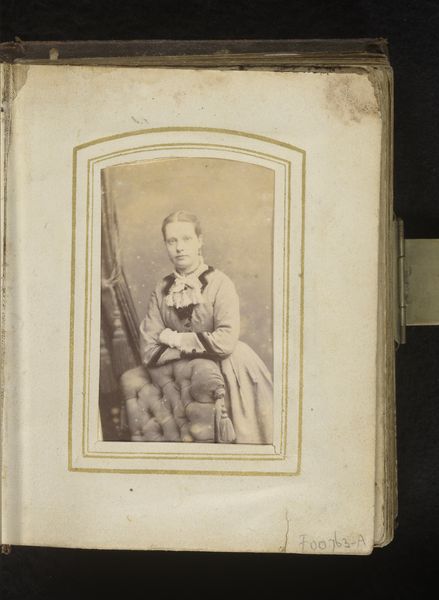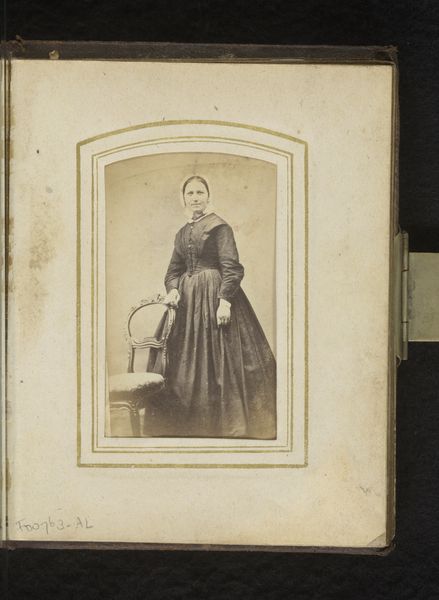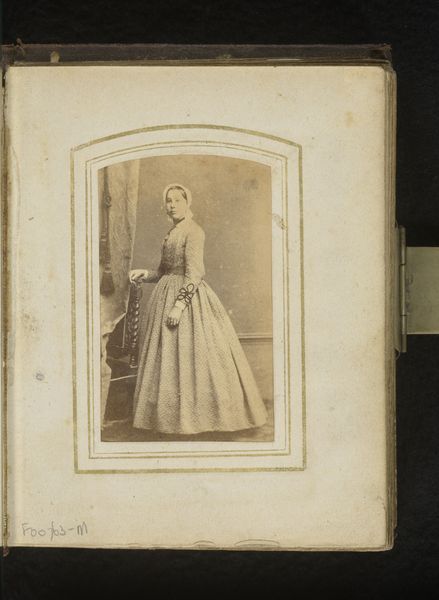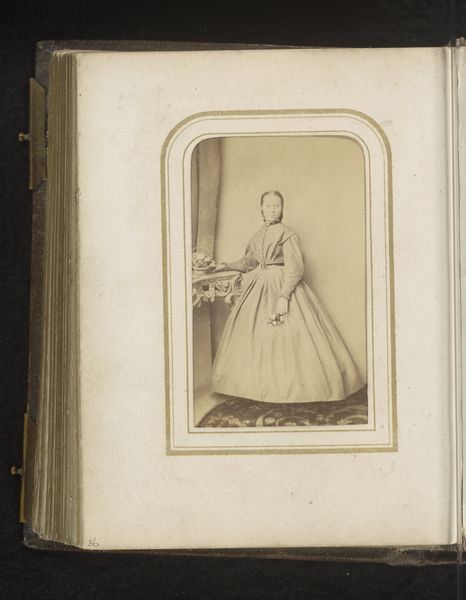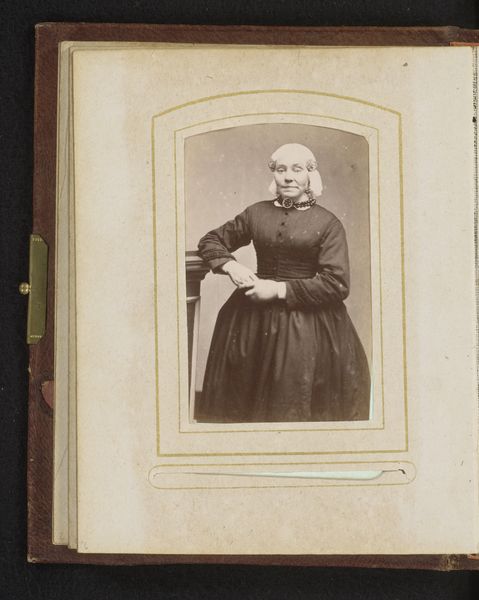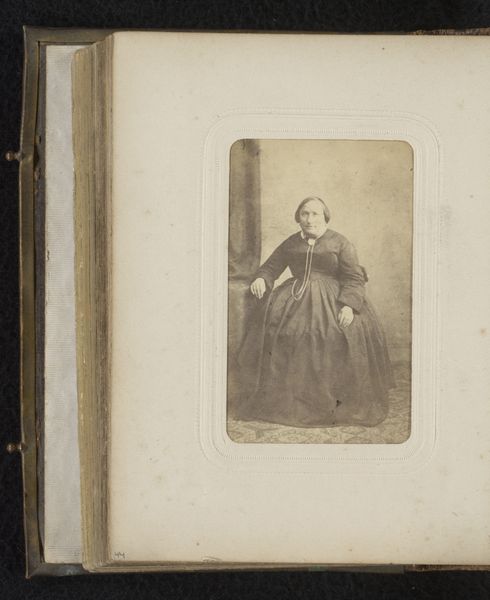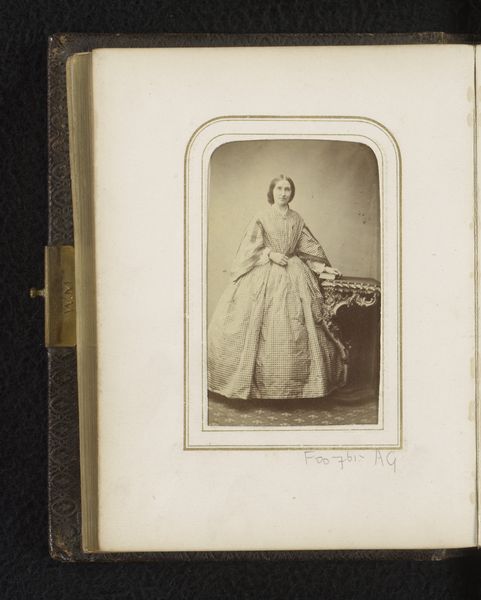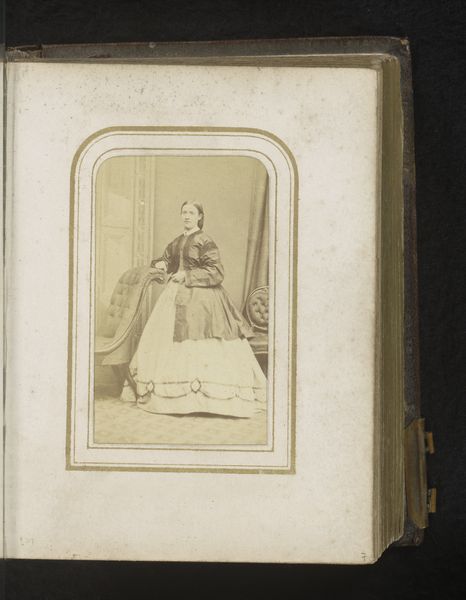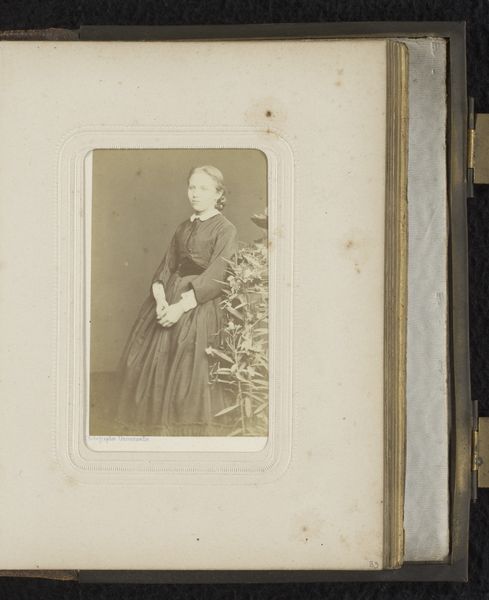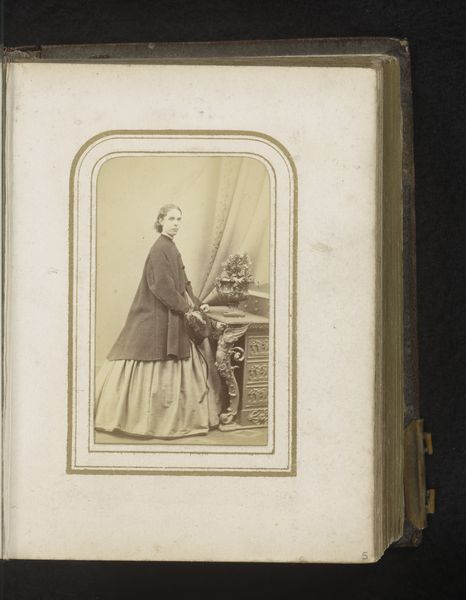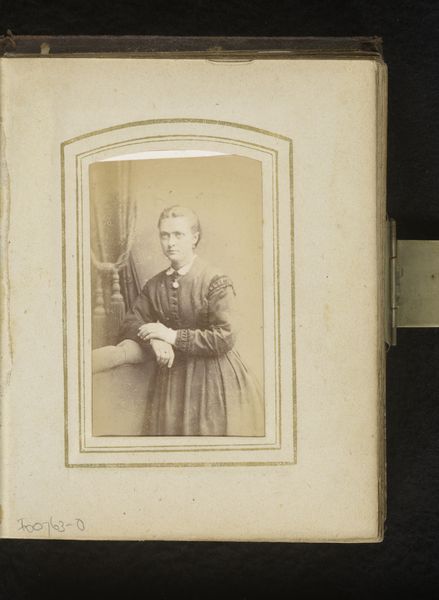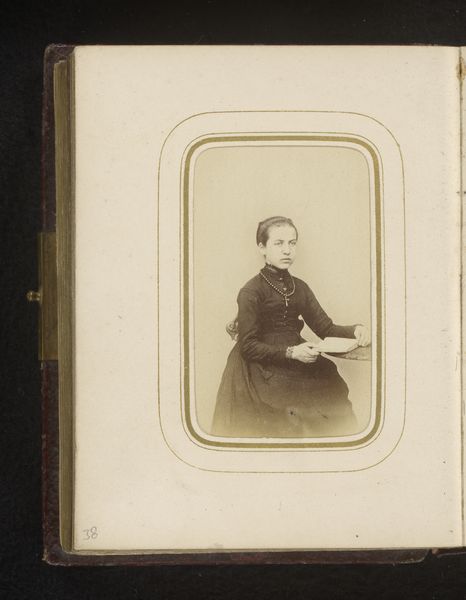
photography
#
portrait
#
still-life-photography
#
photography
#
genre-painting
#
realism
Dimensions: height 81 mm, width 50 mm
Copyright: Rijks Museum: Open Domain
Curator: This photograph, "Portret van een zittende oude vrouw met muts," by Ch. Binger & Co., was taken sometime between 1862 and 1882. It’s currently housed here at the Rijksmuseum. Editor: Wow, she has kind eyes! It's simple, but deeply resonant. It’s like seeing my own grandmother staring back at me through time. There’s a certain sadness too, like a quiet acknowledgement of a life lived. Curator: The composition certainly emphasizes the weight of experience. The subdued tonality, nearly monochromatic, focuses our attention on the textures—the fabric of her dress, the lines etched on her face. These are all codes for understanding age and history. Editor: The check pattern of her dress against the stark background, though. I mean, isn’t there also a whisper of playfulness? Maybe she picked it out herself! Or maybe that is just wishful thinking on my part... Curator: An interesting observation. One could argue that the geometry serves to further define her presence, containing the subject within rational structure. The muts—the head covering—acts as another formal constraint, drawing attention to the face as the primary site of meaning. Editor: To me, her face tells a million stories. But she looks tired too. Almost as if she's wondering how much longer this whole process of sitting for the photographer will take! Curator: Indeed. We also have to consider the role of realism as an artistic style here. Binger & Co. were clearly invested in capturing the subject “as is,” without idealization or romanticization. We see a genuine depiction of aging, which diverges sharply from classicism's preference for youthful vitality. Editor: Right. It really is just… her. You get the feeling this is as close to the real woman as the technology of the time could provide. And it’s touching. A sweet window into someone's existence over a hundred years ago. Curator: It highlights a democratization of portraiture—less about wealth and status, and more about preserving memory. The semiotic components coalesce into an eloquent document about time, aging, and representation itself. Editor: In the end, the photograph feels very intimate to me. It prompts empathy. It makes me wonder about the woman's hopes, dreams, and quiet moments that history so often overlooks. A little piece of her lives on through this.
Comments
No comments
Be the first to comment and join the conversation on the ultimate creative platform.
